
6 minute read
Don’t Fear Your Gear
THE COMPASS
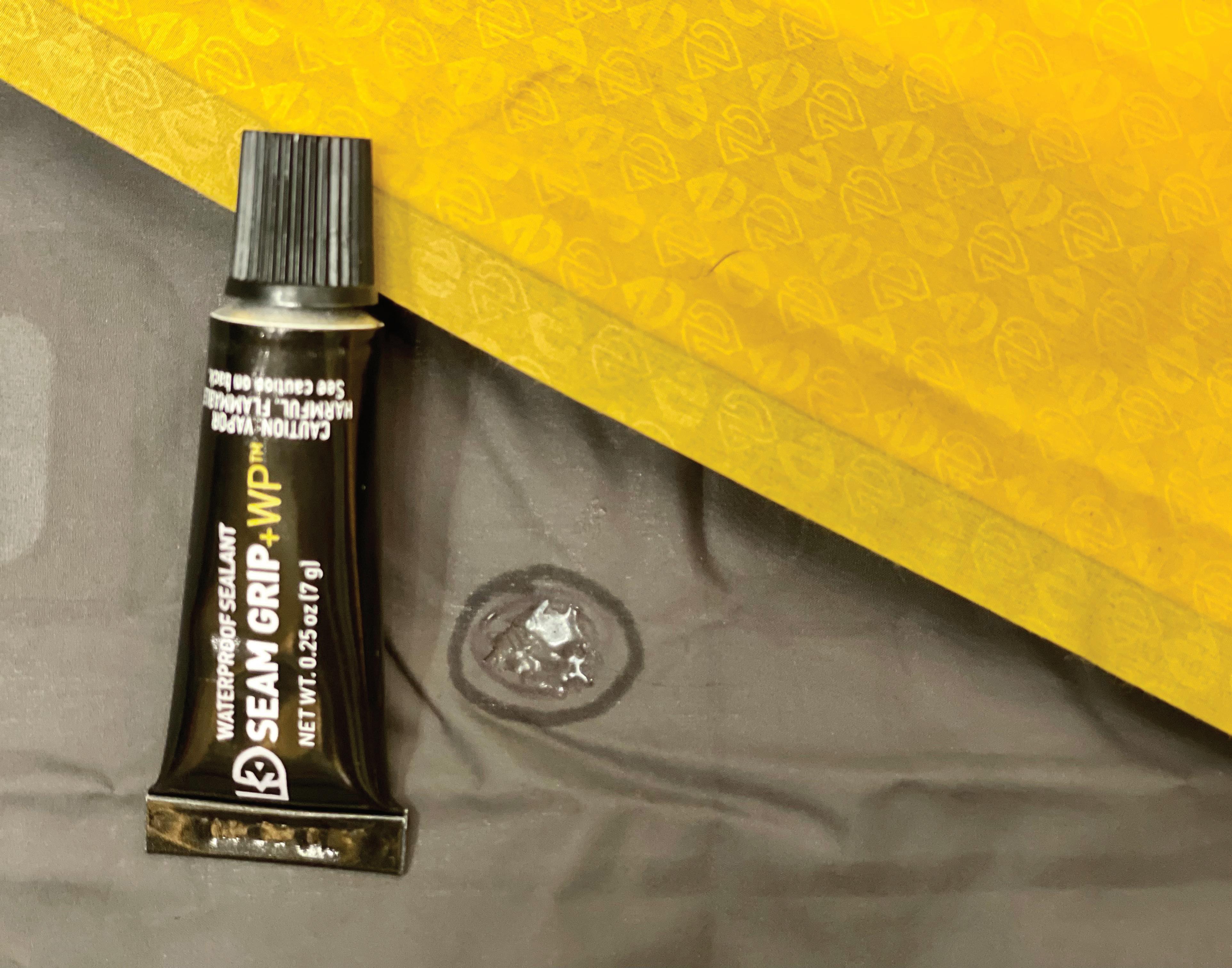
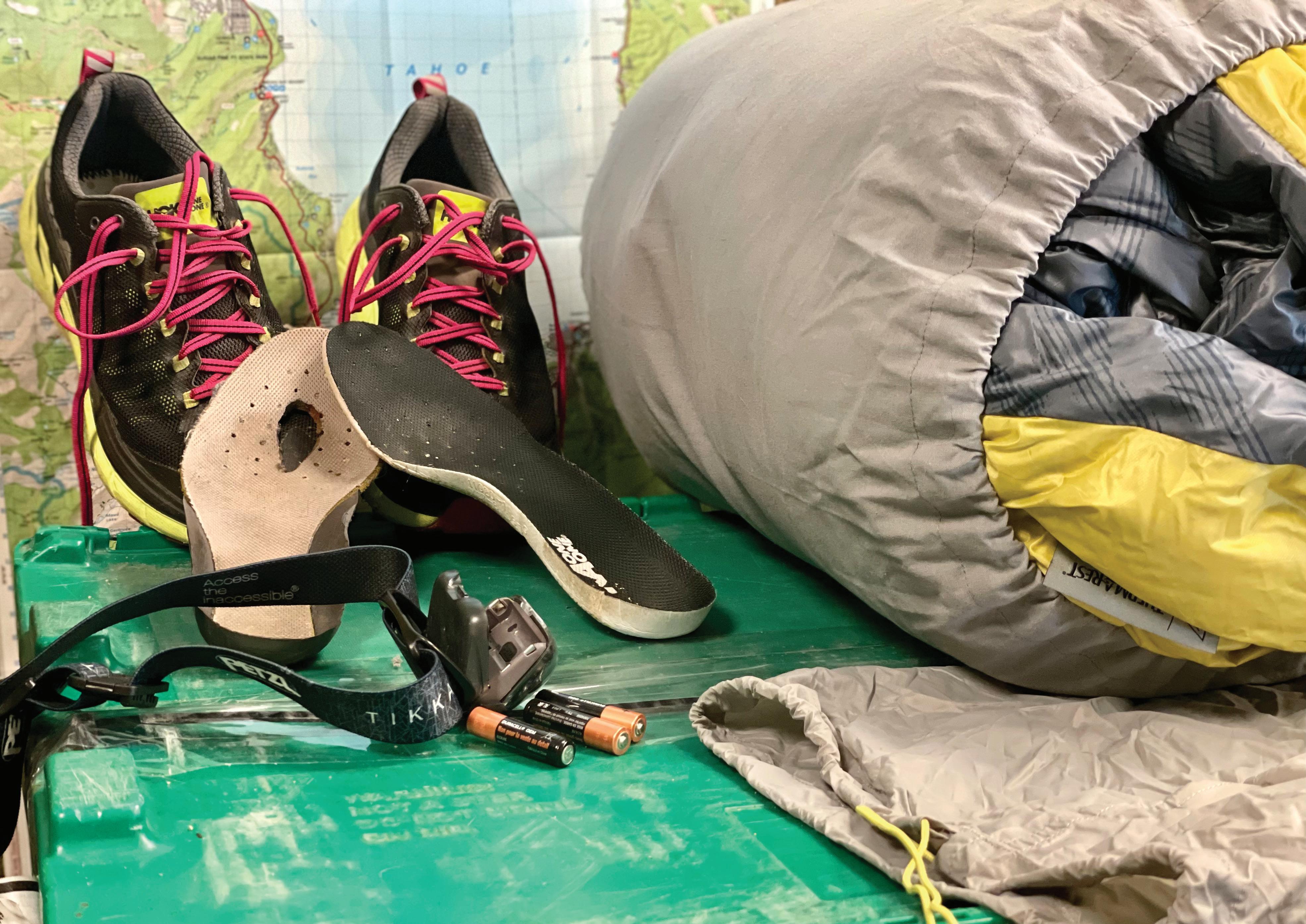
Don’t Fear Your Gear
Regular maintenance is a part of risk management
BY LINDSEY SCHULTZ
From a very early age, we learn the truth that the more we take care of our toys, the longer we can play with them. These lessons are still applicable as an adult, except now our toys are even more expensive. Taking care of them should be a part of every outdoor enthusiast’s pre-trip preparations. Our outdoor equipment’s proper performance makes using it more enjoyable and safer. Below is a quick guide for basic gear maintenance and storage to ensure your toys maintain their top-notch performance and assist you in reaching your adventure goals rather than compromising them.
Apply these rules (as applicable), and your gear will be set for your next big adventure: • Wash • Re-waterproof • Remove batteries • Store gear clean, dry, and uncompressed in a dark and cool location • Read and follow the manufacturer’s care instructions for the gear’s materials • Contact a professional when maintenance and repair needs are beyond your skillset
Preventative Maintenance
Maintenance can be a struggle! As dreaded as it may be, maintaining your gear as soon as possible after each trip will lessen repair needs.
Wash Your Outerwear and Down Gear
Dirt and oil cause down fill to lose loft (and stink!), reducing warmth, while technical outerwear fabric loses breathability, compromising function. It’s time to do laundry. Follow the laundry instructions on your garment’s label. No label? Close your zippers and wash your technical gear using a cleaning solution like Nikwax with cold water on the gentle cycle or in a washbasin agitating with your hands. Stay far away from traditional laundry detergents. Dry with low heat on gentle to protect the Durable Water Repellent (DWR) finish and add a couple of tennis balls to the dryer to help replenish loft. After several washes, consider reapplying a new DWR treatment using a spray or wash-in product.
Love Your Footwear
Water, sweat, and dirt are the enemies of our trail shoes. Wet material grows bacteria and mold, while dirt and mud can cause material to turn rigid, weakening the fiber and making it more susceptible to wear. After each adventure, remove the insoles and let your shoes dry and air out. Avoid too much heat or direct sunlight, which can crack, melt, and compromise the material. Rinse your trail shoes with water from time to time, especially when muddy, and use a soft brush scrub when needed. Treat with spray disinfectant and a waterproofing agent, depending on the material. Always let your trail shoes completely dry out before reinserting your insoles and hitting the trail. And don’t forget to throw your trail shoes’ insoles in the washing machine from time to time!
The Big One, Two, and Three!
Salt from your sweat and oil from your skin collect on the straps and back of your pack, the lining of your sleeping bag, and the floor and flaps of your tents, creating salty grease traps that capture dirt, attract critters, and start to smell less like pine trees and more like a compost pile of sweaty socks. Your sleeping bag, tent, and backpack are known as your Big Three for backpacking because of their importance in backcountry travel and living. They also tend to be the most expensive. Taking care of them is a critical part of gear maintenance! Sleeping bag maintenance is essentially identical to the machine washing of down outerwear. However, backpacks and tents must be hand-washed using a soft sponge and lukewarm water, then hung to dry away from the sun. Be sure to scrub the zipper. Mild soaps like diluted Dawn are okay to use on fabrics. Zipper lubricants like Gear Aid Zip Care are recommended once the fabric has dried.
Water, Water, Water
Bacteria and mold are gross, taste terrible, and can make you sick. So why haven’t you cleaned your hydration bladder lately? We’re all guilty of it, but it’s not hard! Some bladder
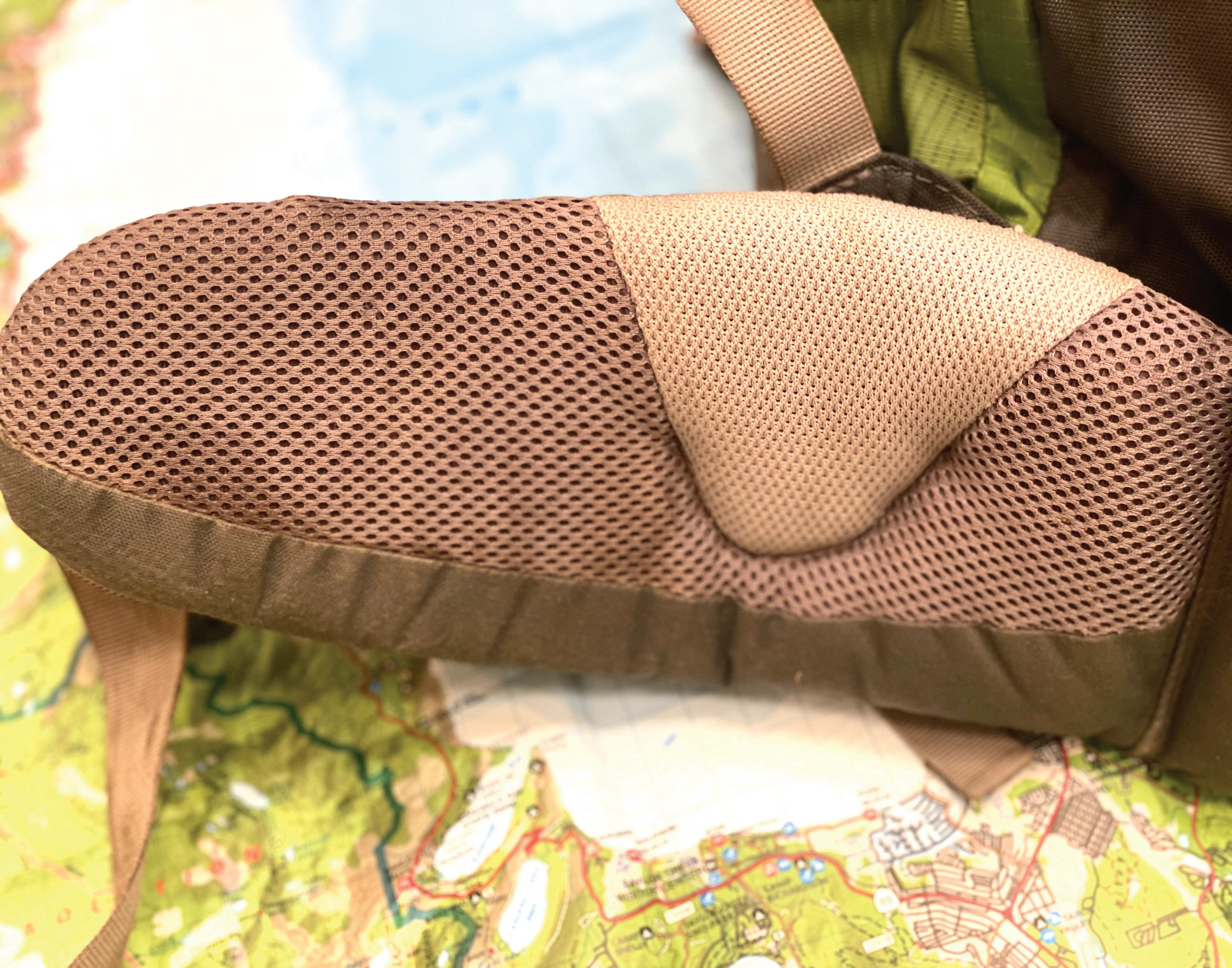
manufacturers offer cleaning kits consisting of a reservoir cleaning brush, a long tube brush, and a drying rack. If you have it, use it. If not, use what you have around your kitchen sink. Fill your bladder with hot, soapy water, and let soak for 15 minutes. If the funk is serious, pull the bite valve off the hose and the hose off the bladder for a deeper clean. After a soak and soft scrub, thoroughly rinse and let it completely dry. A hanger can work well to keep the bladder open for drying. Methods for cleaning water filters and purifiers vary slightly. First and foremost, follow the manufacturer’s maintenance recommendations and do it at home to avoid maintenance needs in the field. Typically, those recommendations will include softly scrubbing the exposed filter or shaking the filter when attached to a full bladder, disinfecting the pump with diluted chlorine for 30 minutes, backflushing both at home and in the field, and letting it completely dry out before storage. Most importantly, check the manufacturer’s instructions.
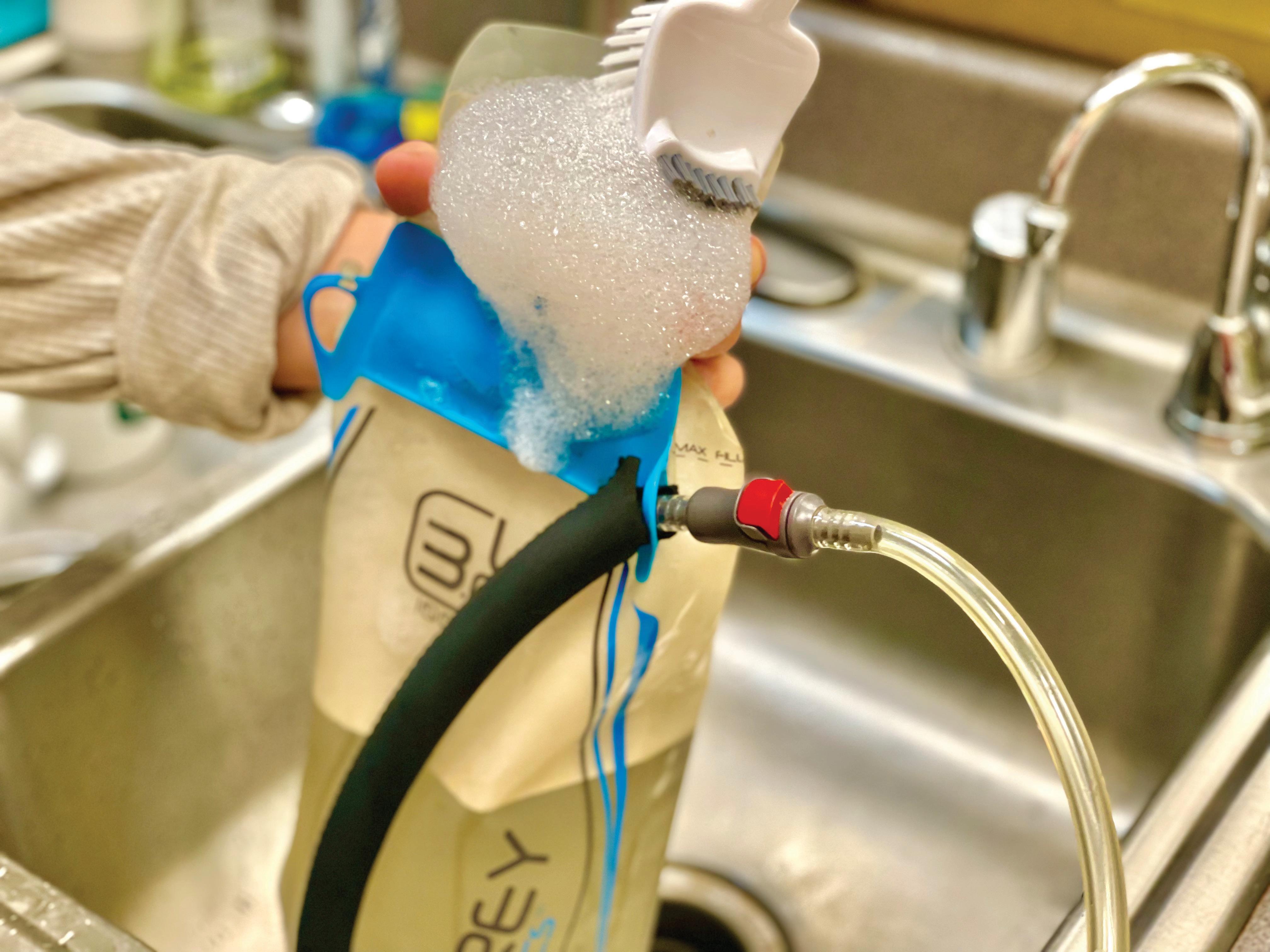
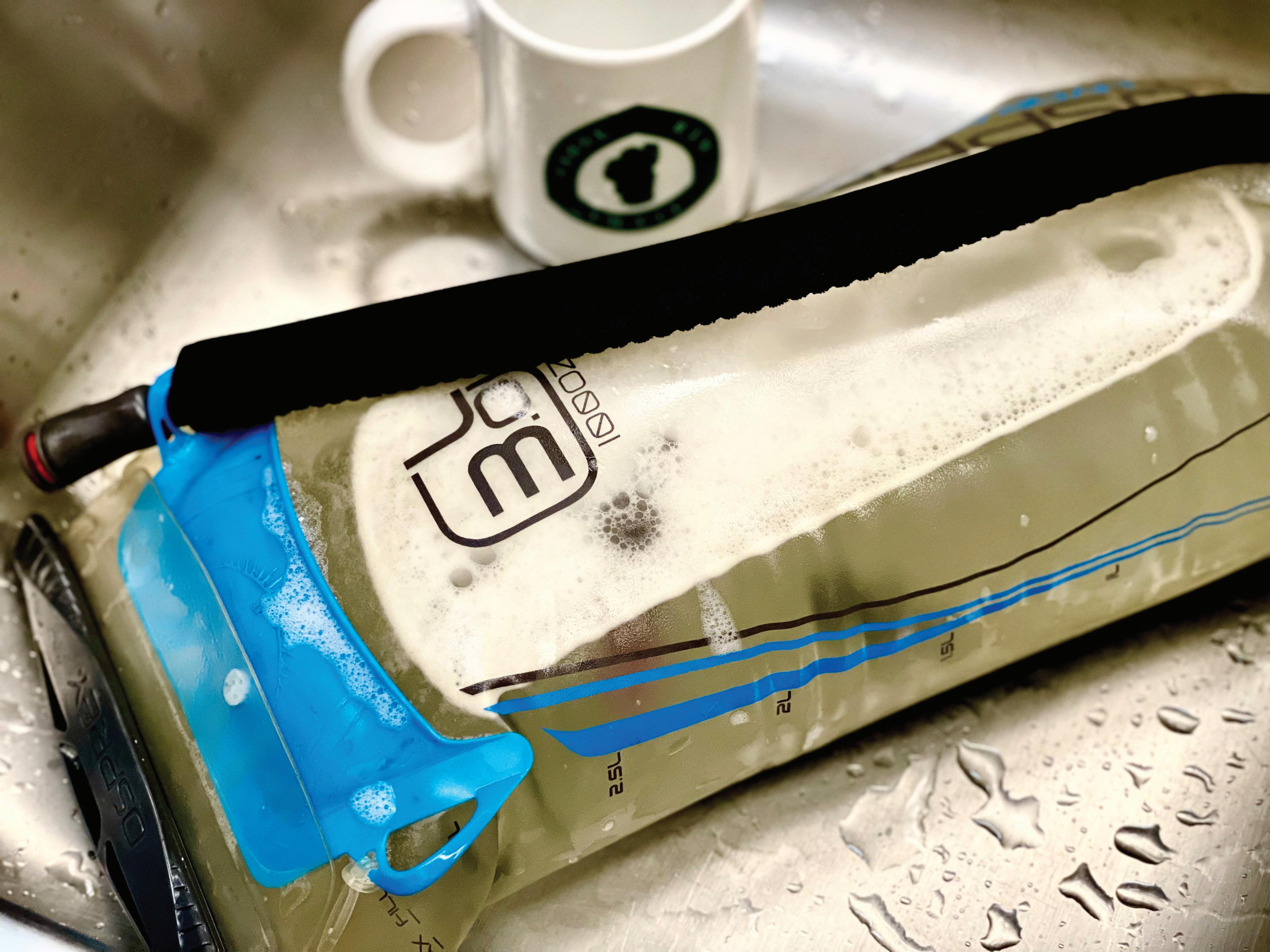
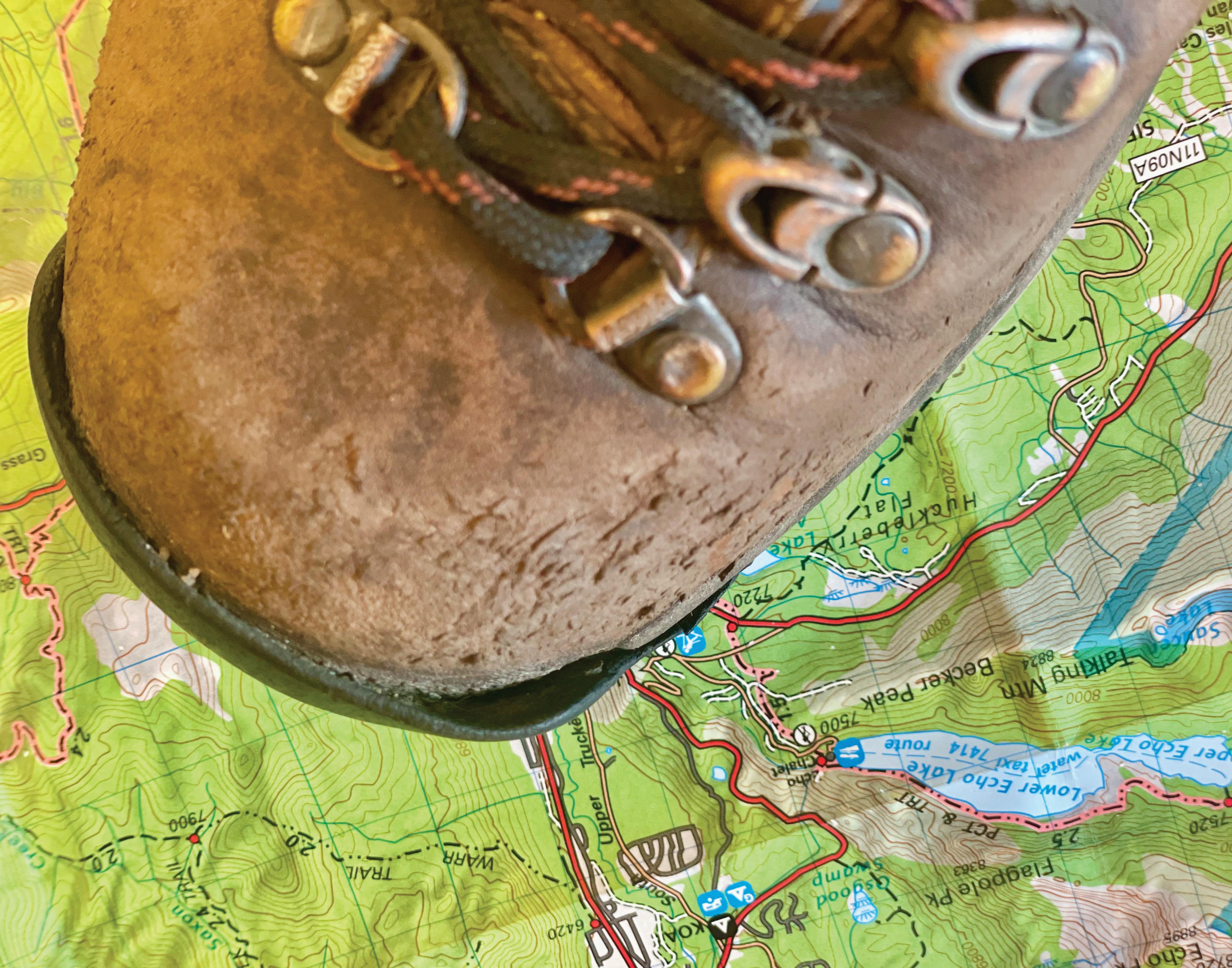
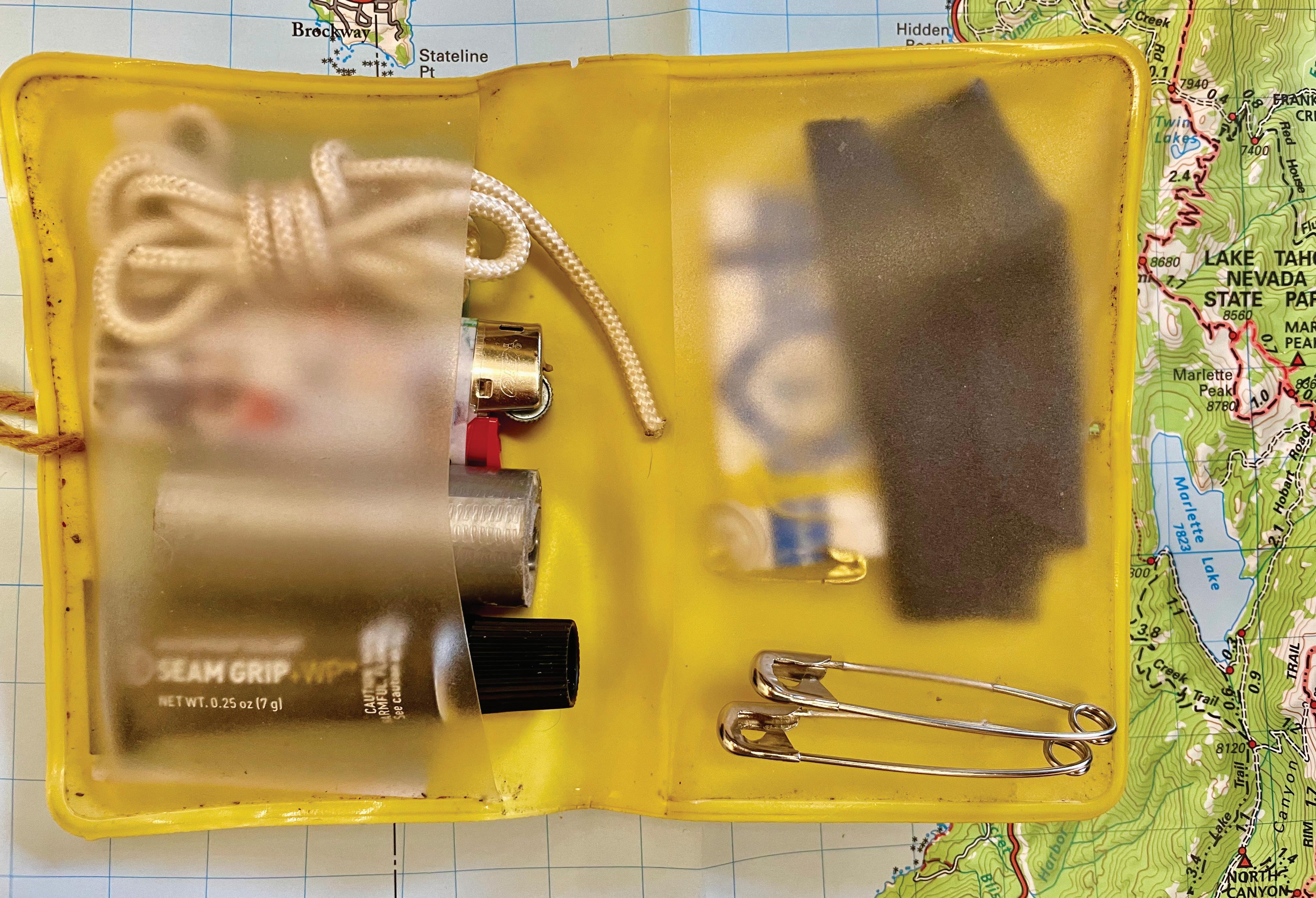
Storage
After your gear is clean and completely dry, it is ready for long-term storage. Always store your gear in a clean, cool, dry, and well-ventilated environment. No sun! No heaters! No rodents! Store the insoles outside of your shoes, the batteries outside of your headlamp, and your sleeping bag or quilt uncompressed in a loose, breathable sack. Think through where you will store your gear ahead of time and use storage bins as necessary to deter critters and dust.
Essential Field Repair Kit
Everyone’s field repair kit will vary based on their gear and the adventures they take. Things that can break and require field repair include ripped clothes, leaky seams, splintered poles, cracked water bottles, busted zippers, punctured pads, snapped eyewear, frayed or delaminated shoes, and torn shoelaces. For home repair, hang onto old gear to harvest parts from (and reduce waste!). For field repair, below are some items to consider bringing in a compact, lightweight kit. • Lighter • Aquaseal • Duct tape • Sewing kit • Small cloth • Tenacious tape • Knife or multi-tool • Paracord or webbing • Heavy-duty safety pins • Bike repair gear - patch kit, new tube, and tools to complete field repair
The bottom line, maintenance is worth the effort and part of staying safe in the backcountry. One way to avoid maintenance is to embrace the backcountry minimalist in you and use less gear by living out of your comfort zone and choosing gear with multiple uses. Less gear means less to go wrong! Nature and a handful of thoughtful essentials are all we need to enjoy a trip outdoors safely. Your toys and wallet will thank you.
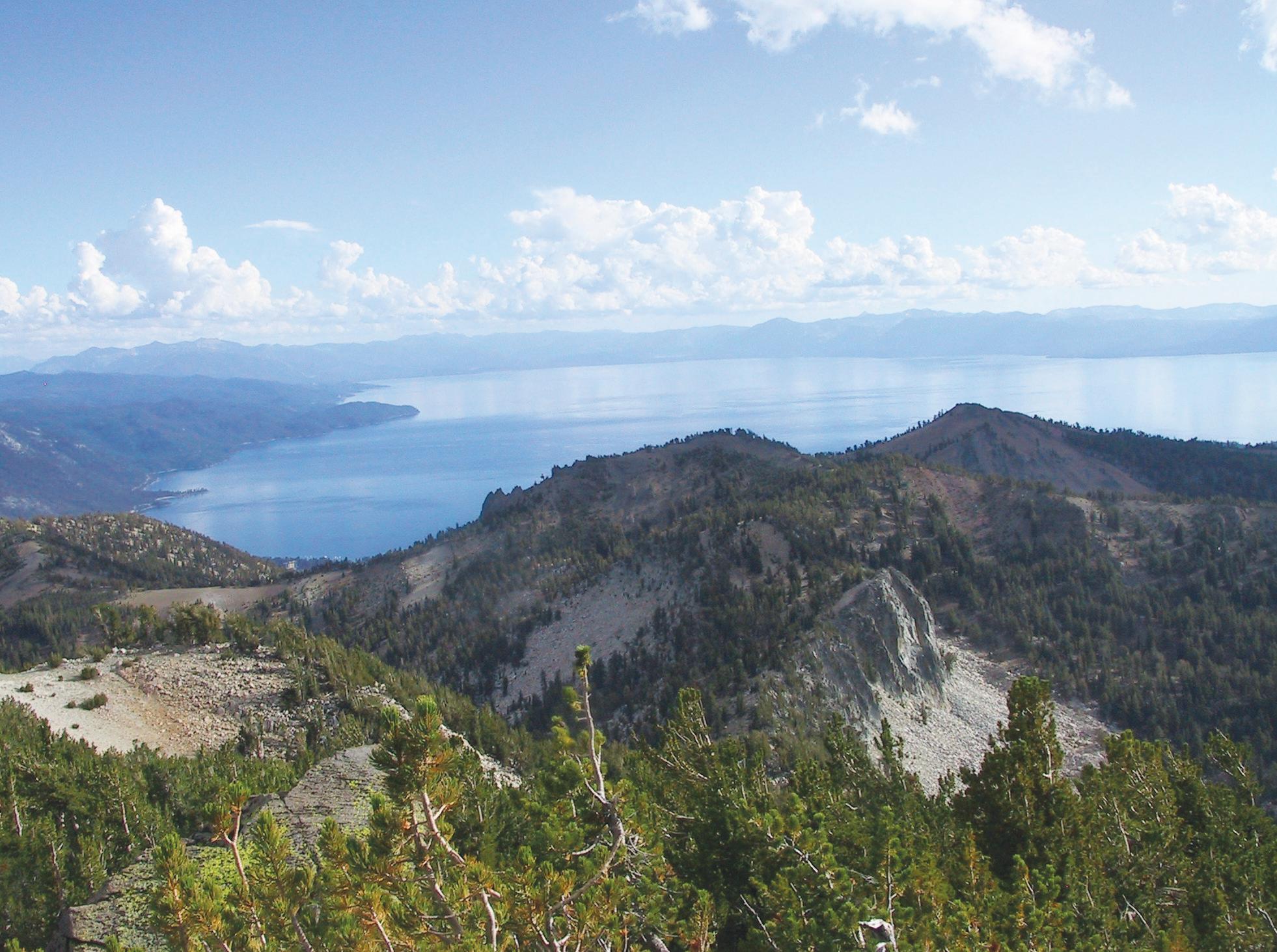
Staff Gem
Standing on the highest point of the TRT, Relay Peak at 10,336’, affords incredible views of Lake Tahoe to the south. Next time you’re up there, however, turn around and look to the north. On a clear day, you can see Prosser, Boca, and Stampede Reservoirs; Donner Lake; and even Mount Lassen over 100 miles northwest if the skies allow.
— Lindsey Schultz







